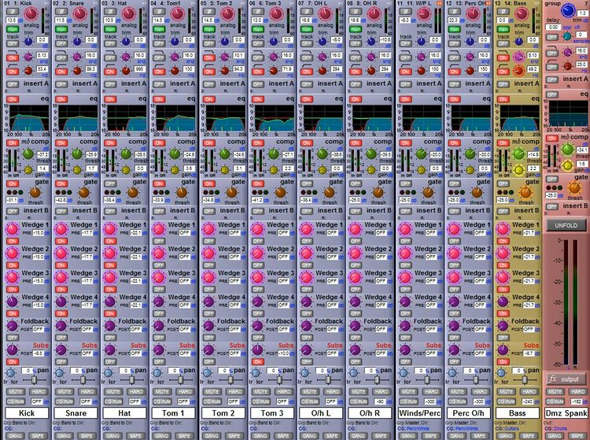After sorting our input lists, stage cabling and custom boxes, the next step to optimizing our stage is not really on the stage at all.
For me, the final phase is getting an optimized baseline show file for each position.
In this post, we’ll be discussing audio files (in the digital world), but much of the concepts apply to lighting, presentation and video as well.
The Baseline Show File
When I refer to a baseline show file, I mean the starting file that we call up each week to use as a starting point. Depending on your console, this could also be a starting scene or memory location.
It is important to preserve the baseline file, so the first thing we do once we load it up is to re-save as a different file name (we name ours the date of that Sunday). We also keep our baselines in two different folders in Dropbox, one which auto-syncs to the attached computer, and one that does not. I may talk more about this process in another post.
What To Baseline?
There are some basic things you’re going to want to include in the baseline no matter what your situation is. Output patching, matrix mixes that feed other rooms, basic input patching and channel names, starting grouping and VCA assignments and the like are all great places to start a baseline.
Once you have those things in place, you have a decision to make; do you start with a “zeroed” board or “dialed” board? Each has it’s pros and cons, and which you choose will depend on your situation. Here are some thoughts.
Zeroed
The concept of zeroing the board goes back to analog days. Back then (or yesterday if you’re mixing on an analog console still), you would reset the gain, EQ and aux settings to “zero” each weekend and start the mix from there. A digital version of that baseline is easy to do.
Your baseline show could be zeroed out with your gains at their lowest setting, EQ’s all flat, and Aux sends all off. In a zeroed baseline, you would probably not have any snapshots (except perhaps an “all off” with all inputs and outputs down—a trick I learned from my friend Dave). This is a great way to go if your band configuration changes regularly or you have a variety of operators who like to do things their way.
To be sure, there are some good things about this strategy. It doesn’t let anyone get lazy with their setup because it has to be re-built each week. You’re always starting fresh, and that can be really healthy. It does take a little more time each weekend during sound check, however. You’ll have to build your gain structure, EQ and aux mixes for the whole band from scratch, and that takes time.
If you have the time, I think it’s a great way to go. But it’s only one way to go. Personally, I prefer the next method, which is what we do.
The left fader bank of my baseline show file. Note (in the image above) how much is already pre-set.






















